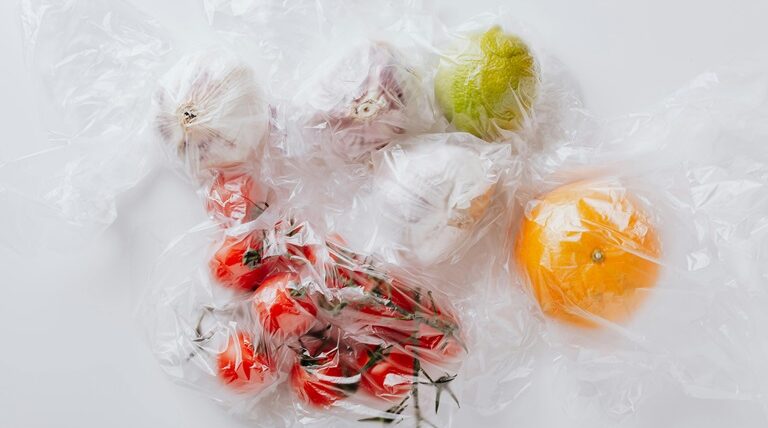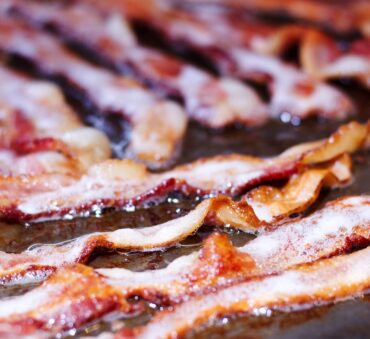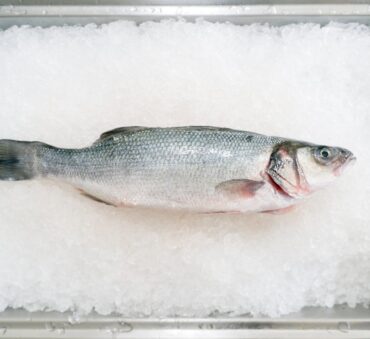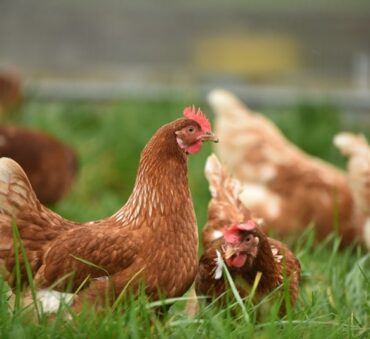Imagine a world where we could drastically cut down on the colossal 142.6 million metric tons of plastic packaging produced annually.
In the US, this is equivalent to about 140 kg of packaging waste per person.
This unsettling reality highlights a global challenge that demands innovative solutions. Among these solutions, there’s one that stands out as both ingenious and practical—edible packaging.
In a time where plastic waste is a pressing issue, edible food packaging presents a promising remedy.
Let’s explore all about edible packaging for food, including the types, technologies, benefits, challenges, and more.
Key Takeaways
- Edible packaging, made from various biopolymers, revolutionizes traditional packaging methods, extending food shelf life while reducing plastic waste.
- Edible films, coatings, and materials from food byproducts are paving the way for more sustainable packaging options.
- While promising, edible packaging faces hurdles such as technological complexities, regulatory compliance, and consumer acceptance that require continued research and innovation.
- Edible packaging aligns with sustainability goals, reducing plastic pollution, carbon emissions, and food waste, making it an eco-friendly choice for the future.
Understanding Edible Packaging
Edible packaging is a revolutionary concept in the world of sustainable packaging. It’s eco-friendly, and it not only safeguards your food but can also be consumed as part of the meal. Here is what you need to know about this creative solution that reshapes the future of the food and packaging industries.
What is Edible Packaging?
Edible packaging is precisely what it sounds like—packaging that can be safely consumed along with the food it encloses. It can take various forms, from coatings and films to wrappers and containers, all designed to serve as a protective shield for food while remaining entirely edible.
The best part?
This innovative approach transforms packaging from a disposable item into an integral part of the food supply chain.
While conventional packaging materials often contribute to environmental issues and waste, edible packaging eliminates the need for single-use plastics and other non-recyclable materials.
This directly addresses the concerns related to packaging waste and its ecological impact.
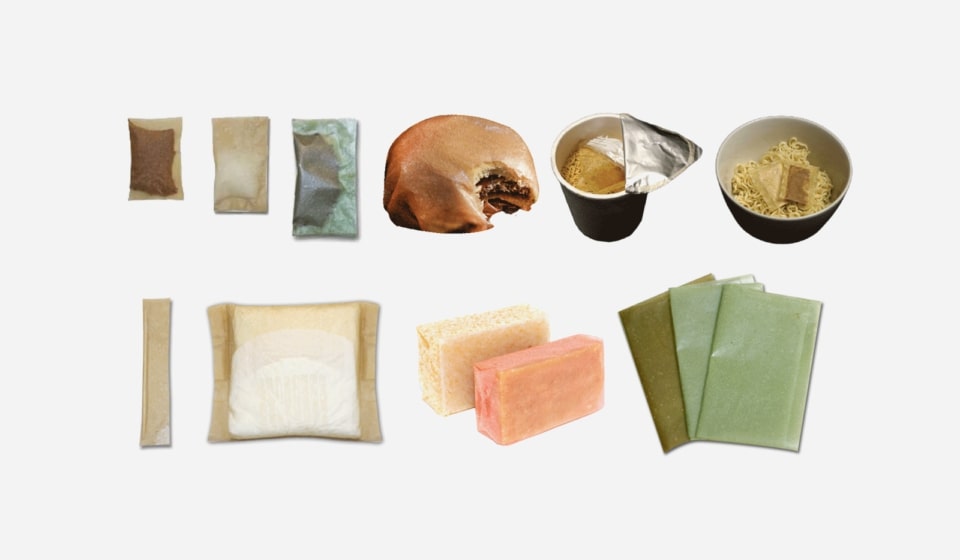
Edible Packaging Materials and Their Properties
There are two distinct edible food packaging materials: films and coatings.
But what is the difference between the two?
- Edible films: Edible films are thin, flexible sheets made from biopolymers, such as polysaccharides (like starch and gums) or proteins (such as gelatin and gluten). These films are created separately and then applied to food products. They serve as protective layers, shielding the food from external factors. However, they are sensitive to moisture and are not suitable for application to foods susceptible to rapid food deterioration.
- Edible coatings: Edible coatings, on the other hand, are protective layers directly formed and applied to food items. They can be superficial coatings or layers between different compartments within the same food product. Edible coatings also utilize biopolymers like polysaccharides, proteins, and lipids (including waxes and lipid derivatives). These coatings offer benefits such as moisture resistance, which is crucial for extending the shelf life of various foods. However, lipid-based coatings may lack transparency and flexibility and are susceptible to rancidity over time.
Edible Packaging Types
Edible packaging types encompass a diverse range of innovative options, each with its unique properties and applications:
- Edible wrappers and containers: These are often made from ingredients like rice, seaweed, or edible plant materials. Edible containers and edible plastic wraps also add a unique flavor and texture to dishes. They are used for packaging sushi, rice balls, and takeaway foods. One drawback is that they can be less durable than traditional packaging and may require specific handling.
- Edible gelatin capsules: Gelatin capsules are derived from animal collagen and have no odor or taste. They are commonly used for encapsulating pharmaceuticals and dietary supplements as they dissolve quickly, releasing their contents. Gelatin capsules are not suitable for all food products, and they may have limitations in terms of flavor retention.
- Edible baking cups: Typically made from ingredients like wheat flour, these cups are designed to withstand baking temperatures. They are used for baking muffins, cupcakes, and other baked goods. Edible baking cups eliminate the need for disposable paper or plastic liners. While they add a delightful crunch to baked treats, they are not as versatile as other edible packaging types, as they can be used only for baking.
Evolution of Edible Packaging Technology
The journey of edible packaging technology has been a fascinating one, marked by significant milestones.
For example, did you know that the very first edible packaging dates to 12th century China, where citrus fruits were coated with wax to preserve their moisture?
Also, most food packaging up to the 20th century was, in fact, edible. However, during the 20th century, petroleum-derived plastics took over the packaging world and became the standard because of their convenience and cost-effectiveness.
But, in recent decades, the need for more sustainable and eco-friendly solutions has required the food industry to return to the more natural edible packaging solutions.
From the early experiments with biopolymers to the development of edible films and coatings, it has been a testament to human ingenuity and a commitment to reduce plastic waste.
Challenges and Limitations of Edible Package Solutions
While edible packaging represents a promising solution to combat food waste and reduce environmental impact, it isn’t without its share of challenges and limitations.
- Technological hurdles: Developing edible packaging materials that can effectively preserve a wide range of foods while maintaining taste, texture, and safety can be technologically demanding. Finding the right balance between biodegradability and functionality is still a significant challenge.
- Cost considerations: The truth is that edible packaging materials often are more expensive than conventional packaging. The production costs associated with sourcing and processing natural ingredients for edible packaging can pose financial challenges, potentially leading to higher product prices.
- Food compatibility: Not all food products are suitable for edible packaging. Unfortunately, items with high moisture content or specific storage requirements may not be compatible with current edible packaging solutions, limiting their application.
- Climate and storage: Environmental conditions, such as temperature and humidity, can affect the stability and shelf life of edible packaging. Adapting these materials to different climates and storage environments poses logistical challenges.
- Consumer acceptance: This is a crucial factor in the success of edible packaging. While many consumers are eager to embrace eco-friendly solutions, others may be hesitant to change their packaging preferences, leading to potential marketing challenges.
- Regulatory considerations: The regulatory landscape surrounding edible packaging can be complex. Ensuring that these materials meet safety and quality standards while navigating varying regulations across regions can be a hurdle for manufacturers.
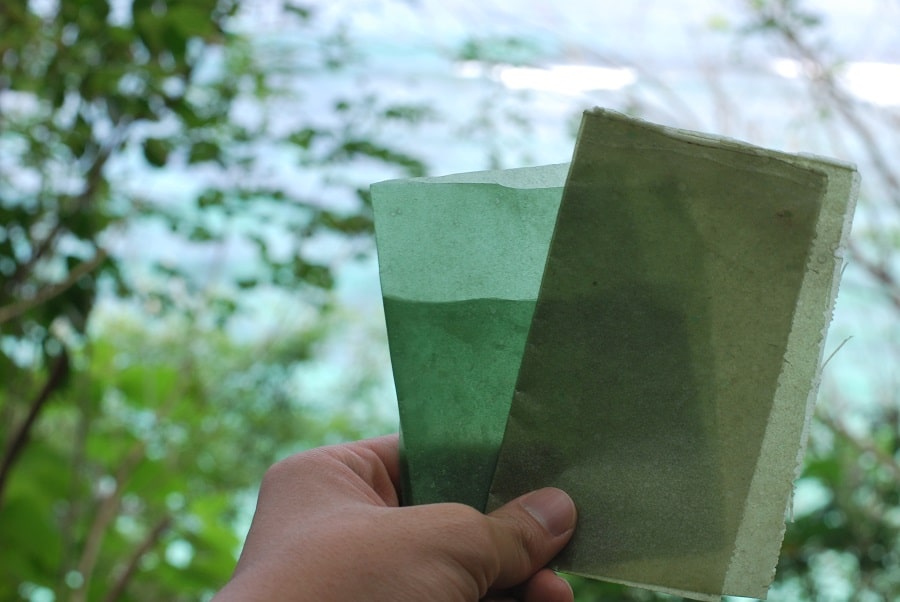
Benefits of Edible Packages
Edible packaging offers a multitude of environmental benefits, making it a compelling solution in the quest for sustainable food systems.
- Reduced plastic waste: One of the most significant advantages of edible packaging is its potential to curb plastic waste. Landfills and oceans are overflowing with conventional plastic packaging waste. According to estimates, global plastic production for packaging surpassed 140 million tons in a single year, and edible packaging can substantially mitigate this environmental burden.
- Biodegradability: Unlike traditional plastics, which can persist in the environment for centuries, edible packaging materials naturally biodegrade. This means that when discarded, edible packaging breaks down into harmless organic compounds, leaving no lasting ecological footprint. This characteristic aligns perfectly with the principles of a circular economy, reducing the burden on landfill sites.
- Lower carbon emissions: Edible packaging also has the potential to lower carbon emissions throughout the entire product lifecycle. The production of traditional plastic packaging relies heavily on fossil fuels, contributing to greenhouse gas emissions. In contrast, edible packaging materials are often sourced from renewable resources, reducing the carbon footprint associated with their manufacturing.
- Food waste reduction: Incorporating food waste innovative technology, like edible packaging, can play a crucial role in minimizing food waste.. By preserving food freshness and extending shelf life, it prevents spoilage and the need for premature disposal. In the United States alone, over 30% of food produced is wasted, and edible packaging can help reverse this trend, making a substantial dent in the food waste crisis.
- Sustainable sourcing: Many edible packaging materials are derived from sustainable sources, such as plant-based biopolymers. These materials can be grown, harvested, and processed with minimal environmental impact, further enhancing their eco-friendly profile.
- Consumer appeal: The environmental consciousness of consumers is on the rise. Edible packaging aligns with consumer preferences for eco-friendly options, enhancing brand reputation and marketability. In a recent survey, over 80% of respondents expressed a desire for sustainable packaging alternatives.
Edible Packaging as a Solution to Food Waste
In a world where a third of all food goes to waste, edible packaging is a game-changer. It significantly extends food shelf life, contributing to waste reduction.
- Innovative examples: Casein-based films, derived from milk protein, are a prime example. They boast significantly smaller pores compared to traditional plastic packaging, making them up to 500 times more effective at blocking out oxygen. This attribute is crucial for preventing spoilage and extending the freshness of food. Moreover, should the packaging be discarded, it swiftly biodegrades or can be consumed along with the food it protects.
- Repurposing byproducts: Materials crafted from discarded shrimp shells, silk, or milk products have been repurposed to create biodegradable and eco-friendly edible packaging and reduce food waste. These innovative materials not only safeguard food by blocking oxygen but also mitigate the rapid oxidation that traditional plastic packaging can induce. This development is a response to the escalating plastic pollution crisis and the increasing demand for environmentally responsible packaging in the food industry.
Conclusion: Embracing Edible Packaging
Innovative edible packaging is revolutionizing the food industry by reducing food waste, offering an eco-friendly alternative to traditional packaging, and extending food shelf life.
As we embrace these sustainable solutions, Shapiro stands ready to partner with businesses in managing food waste efficiently and responsibly. With our expertise and commitment to recycling food waste solutions.
Contact us today, and let us guide you toward a more responsible approach to waste management.
Edible Packaging for Food: FAQs
Here are the answers to other edible packaging-related questions:
Edible food packaging is crucial because it extends food shelf life, reducing waste and conserving resources. It offers a sustainable alternative to traditional packaging materials, promoting eco-friendliness in the food industry.
The future of edible food packaging looks promising. As consumer demand for sustainable solutions grows, food companies are investing in research and development. We can expect to see more innovations and widespread adoption in the coming years.
While edible packaging offers many benefits, challenges still remain. Issues like moisture sensitivity and limited applications in certain food contexts need addressing. Scaling up production also poses challenges.
Yes, edible packaging is generally safe. It’s made from edible materials, adhering to strict safety standards. However, like any food product, it must meet regulatory requirements to ensure quality and safety.
Edible packaging is crafted from various materials like proteins, lipids, or carbohydrates. These biopolymers are processed into films, coatings, or containers. Innovations include using byproducts like shrimp shells or milk protein, promoting sustainability.
Baily Ramsey, an accomplished marketing specialist, brings a unique blend of anthropological insight and marketing finesse to the digital landscape. Specializing in educational content creation, she creates content for various industries, with a particular interest in environmental initiatives.
